Preserving and protecting the environment and promoting resource efficiency.
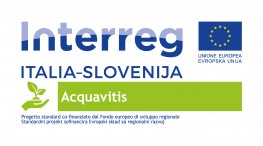
Protecting and promoting natural and cultural resources
The Acquavitis project aimed to develop and test innovative technologies and guidelines for the protection and efficient use of water resources and for contingency planning in the event of unforeseen events and climate change. The exchange of experience between research institutions, the testing of new technologies and the transfer of knowledge will help wine-growing farms to manage water sustainably and rationally in viticulture. In different work streams, researchers and specialists from different fields contributed their knowledge and experience to reach important results and conclusions.
Climate change, reflected in increasingly frequent droughts and high temperatures, is increasing environmental stress, which affects both natural and agricultural ecosystems (especially sectors with a high "water exploitation index") such as viticulture. The cross-border area of Primorska and Friuli Venezia Giulia, more specifically the Vipava Valley, the Karst, Brda and Friuli Venezia, with its geological-geomorphological and socio-economic characteristics (small agricultural holdings), has become particularly vulnerable. The more frequent hot and dry summers occurring in the last decade (2012, 2015, 2018 and 2022) have shown the vulnerability of both forest and agro-productive systems to extreme and abnormal weather conditions. Recent drought conditions have deviated significantly from normal. According to the European Drought Observatory, almost half (47%) of Europe is facing a soil water deficit. Low water levels in rivers, lakes and reservoirs are causing concerns for both irrigation water and drinking water supplies. Rapid climate change leading to rainfall scarcity, above-average air temperatures (above 35 °C) and increased evaporation highlight the urgent need to develop strategies to build resilience and resilience to these changes.
The project has therefore developed Acquavitis, a digital platform that allows monitoring of the main agrometeorological parameters and better management of vineyards. The online platform aims to store, process and visualise data in different ways, encouraging small and medium-sized wine-growing enterprises to adopt innovative approaches and technologies for correct water use.
The new tools, know-how and experience developed within the project will make it easier to adapt to extreme weather events, which will become more frequent in the future.
PORTAL ACQUAVITIS
The Acquavitis interactive portal (www.acquavitis.eu) enables the systematic collection of agrometeorological parameters, geo-visualization of satellite, environmental and other spatial data to help us interpret data on water stress in vineyards and water status in soils and plants. With quick and transparent information, we can prepare for increasingly frequent extreme situations such as water stress in viticulture.
HYDROLOGICAL CYCLE
When faced with drought, water supply and rational water use, it is also crucial to know about water cycling. Over the two years of the project, the isotope method applied to rainwater, soil and xylem sap has allowed us to understand how vines replenish and use groundwater. The importance of winter and spring rainfall in replenishing soil water, even in the deepest layers, was highlighted. Summer rainfall is usually absorbed only in the most superficial layers of the soil and is immediately used by the vines. Winter-spring recharge, therefore, represents an additional strategic resource, particularly during severe drought periods. Understanding these processes was also made possible by the additional sampling campaign carried out for the Ceroglie site in 2021, which allowed us to correlate individual rainfall events with a larger number of soil samples and xylem sap. Data with higher temporal resolution allow a better understanding of the eco-hydrological processes, but it must be borne in mind that each vineyard has its own characteristics, which depend on both the geomorphology/geology of the site and the specificities of the plant (e.g. age of the vineyard, vineyard used, cultivar and substrate). With this in mind, the method developed in the framework of the present project has proven to be effective and therefore represents a valid tool for site-specific analysis.
MONITORING THE WATER STATUS OF VINES
Monitoring the water status of vines using a pressure chamber is an important tool for quantifying water stress levels and for optimising and efficiently managing irrigation during the growing season. Therefore, the pre-dawn water potential (an indicator of the availability of soil water to the plants), the minimum daily leaf water potential (an indicator of the maximum water stress suffered by the vine) and the minimum daily stem water potential were measured in the six main vineyards of the Acquavitis project during the 2020-2021 biennium. In addition, we monitored vine stem water potential in 14 vineyards of the Merlot variety in the Vipava Valley, comparing vineyards on terraces and hills (n=7) and in lowland vineyards (n=7). No particular criticality in terms of soil water availability for plants was highlighted during the two years of the study, but during the hottest months (end of July and end of August) in 2021, a marked increase in water stress was observed relative to Ψsteblo measurements in three of the six study sites, which achieved moderate to high water stress. Vines in the terraced vineyards of the Vipava Valley also showed water stress in July and August. The results showed that vine water stress resulted in a lower yield per vine (25 to 60%) in the terraced vineyards compared to the lowland vineyards. On the other hand, Merlot wines on the terraces contained on average more total dry extract and ash, more anthocyanins (colouring agents) and 20-35% more tannins compared to wines made from grapes from lowland vineyards in the Vipava Valley. The project also carried out some methodological tests to correctly measure water potential. From these tests, it was found that the leaf retention time between harvesting and the measurement of leaf water potential depends on the variety studied and/or the level of water stress achieved. This underlines the importance of developing specific protocols in individual vineyards before field monitoring is carried out.
REMOTE CONTROL FOR MONITORING WATER STRESS IN VINEYARDS
The main focus of the use of remote sensing in the Acquavitis project was the use of different sensors on different platforms to monitor the water status of selected vineyards. In the Komno vineyard, we used a multispectral camera and hyperspectral cameras on a drone, which together capture a signal with wavelengths of 400 - 2500 nm. Correlations between plant water potential measurements and remote sensing data from all three sensors were confirmed. Regression models have been developed to determine vine water stress, but the accuracy of the models varies between sensors and with the level of water stress expressed. In general, the most accurate models were obtained from hyperspectral data taken with an ultralight aircraft, but more field data would need to be included in the models of all tested sensors to produce a reliable method for monitoring water status in vineyards. Vineyards in the area of Precenicco, Strnc and Budihni were monitored using multispectral imagery from the Sentinel-2 constellation. Sentinel-2 is a constellation of two satellites of the European Space Agency's Copernicus programme. Sentinel-2A and Sentinel-2B capture multispectral data with an optical sensor covering 13 channels. The images are captured in visible light, near-infrared and short-wave infrared spectral ranges. Water potential
The leaf water potential measured before dawn, the minimum water potential as well as the stem water potential provide a reliable estimate of the water status of the vines in relation to the water available to the plants and the meteorological conditions. We found that the leaf water potential before dawn is strongly correlated with some wavelengths. The correlation is pronounced in the infrared spectra. In the future, we can expect a wider use of remote sensing data to determine the water status of plants. As confirmed in our project, multispectral, and especially hyperspectral, data are very useful for this purpose. The synergy of aerial, drone and satellite imagery can be a very effective instrument for monitoring the condition of plants over different areas while allowing appropriate action to be taken in the production and processing of grapes.
RATIONAL IRRIGATION AND SOIL MANAGEMENT
Evaluating irrigation guidelines is a challenge for winegrowers because many variables are involved and seasons vary widely. In the context of the project, the use of the DSS Vintel® allowed different irrigation strategies to be tracked and it was possible to verify how moderate water stress from flowering to harvest allowed the vines to be kept in good physiological condition. Yields were slightly reduced, but this did not compromise the quality of the grapes. On the other hand, several threshold levels of water stress caused damage to the plants, which in turn affected the quality of the grapes and wines. The rational use of water in viticulture also involves appropriate and sustainable soil tillage. Thus, the project has focused on research into green manuring technologies, where different mixtures of grasses and/or leguminous crops are used to retain soil moisture. The measure can be useful both in the case of excess rainfall in spring, where the crops are allowed to grow higher, thus improving evapotranspiration and soil drying, or in the other extreme in drought, where bending (roller-blading) allows better coverage and soil moisture for longer periods of time.
Lead Partner
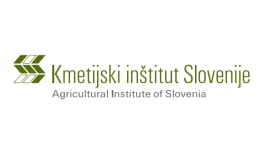
Project partner 1
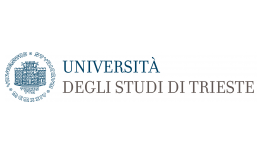
Project partner 2
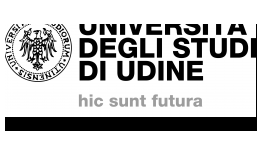
Project partner 3
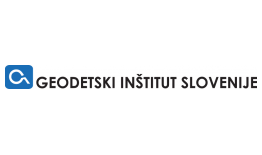
Project partner 4
Project partner 5
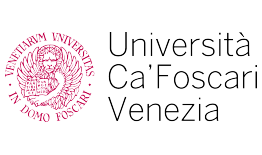
| Final Conference Proceedings Brosura_ACQUAVITIS_online_final.pdf ( 13 bytes, published on 5 January, 2023 - 10:41 ) |
KEY PROJECT OBJECTIVES
The main objective of the completed ACQUAVITIS project was to develop and test innovative technologies and guidelines for the protection and efficient use of water resources and for contingency planning in the event of unforeseen events and climate change. Our priority was to promote the transfer of knowledge and exchange of experience between research institutions and wine-growing farms and wineries in the cross-border area.
CURRENT STATUS OF IMPLEMENTATION
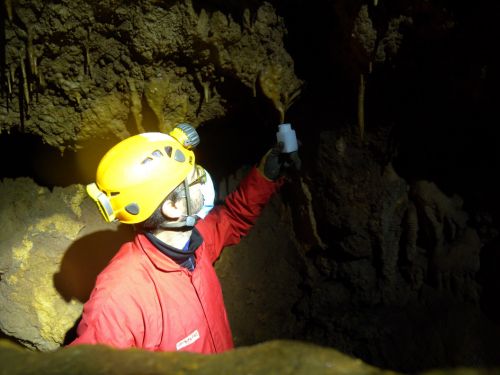 Water sampling in Čerolje
Water sampling in ČeroljeThe project ended on 31.8.2022. We developed a GIS data viewer, https://www.acquavitis.eu/, where data are visualized spatially on a web interface consisting of an interactive map with a basic topographic base that can be overlaid on individual thematic areas. The water cycle studies covered 6 sampling sites where the oxygen and hydrogen isotopic composition of 246 water samples were analysed, mainly rainfall, water taken from canals, ditches, wells and drip water from a cave at the Čerolje vineyard site; 333 soil water samples; 467 xylem sap samples.
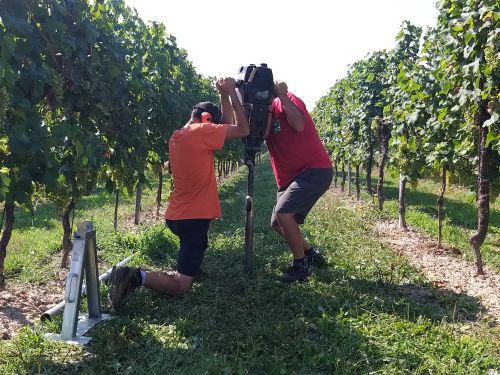 Soil sampling in Precenicco
Soil sampling in PreceniccoThe drought stress status of the vines was monitored in 2020 and 2021 in selected vineyards. The results are presented on the Acquavitis platform. We carried out 4 different experiments to study the effects of water stress, including in combination with heat waves, on the physiological state of the vines and on the production and quality of grapes and wines. The data collected, together with the results of the other previous projects, have led us to certain conclusions which have led us to establish guidelines for the irrigation of vineyards. The results are presented in the Proceedings of the project's final conference.
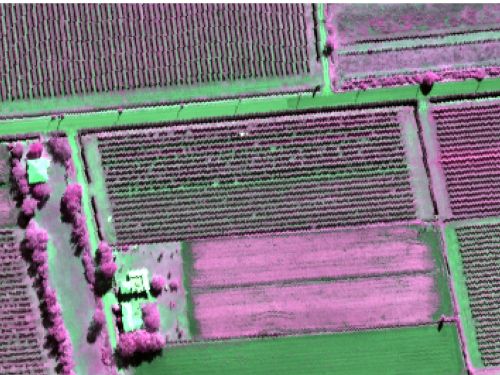 Hyperspectral aerial image of Preccenico vineyard in the shortwave infrared part of the spectrum
Hyperspectral aerial image of Preccenico vineyard in the shortwave infrared part of the spectrumIn the framework of the project, multi and hyper-spectral camera recordings with aircraft and drone were carried out in order to introduce new green technologies for monitoring plant water stress. In the context of better soil management under drought conditions, two experiments were carried out to assess 1) the effect of the timing and method of interrupting green manuring and 2) the effect of using different types of grass mixtures. The effect on grape and wine quality of a 4-5°C increase in temperature was tested by simulating heat waves at the Spilimbergo site. The organoleptic analysis allowed us to show how water stress affects acidity or freshness and the typical descriptors of sauvignon.
The project has organised several professional events for our target groups (kick-off and final conference, series of professional events). We printed and distributed 4 newsletters to inform about our activities and results, and promoted our activities through social networks and our website. The results of the projects are available on the Acquavitis portal in the form of the final brochure, newsletters or videos produced within the project.
Despite the end of the ACQUAVITIS project, we will continue our research and work in this field in the framework of the capitalisation project IRRIGAVIT - Rational irrigation and soil management in cross-border viticulture. In this new project, we will transfer the knowledge and results obtained from ACQUAVITIS and use them to consolidate and disseminate strategies that promote vineyard resilience in new areas of particular interest for viticulture (Colli Orientali, Brda).
ACQUAVITIS VIDEO LIBRARY
Acquavitis Project and the 2020 vintage
What was this vintage like and what did we do during the growing season in 2020? Prof. Enrico Peterlunger is presenting ACQUAVITIS work directly from the experimental vineyard in Precenicco, Italy.
Soil cores: soil sampling at different depths
The term "core drilling" identifies the drilling of the soil with the extraction of cylindrical samples, the so-called "cores", which the geologist examines and describes in the study of the soil. In the Friuli vine sites, soil cores were extracted by means of a perforator up to a maximum depth of 2m. The samples were collected every 20 cm of depth and sent to the laboratory to examine the presence of the waters and their isotopic composition.
During the 2020 vegetative season, three campaigns were carried out for the sampling of the soils in the 6 experimental vineyards, located in 3 different geological, geomorphological and climatic contexts (2 in the Vipava Valley, 2 in the Classic Karst and 2 between Collio and the Friulian plain) to identify the type of water present in the soil and understand which water is used by the plants in a specific time period of time.
The leaf water potential was measured at different times during the season at a constant frequency from the beginning of June to mid-September in 6 vineyards included in the project. Several samplings of the soil and leaves of the vine and xylem sap were carried out to obtain information on any situations of water deficit and the consequent irrigation needs. How is the Scholander chamber used for the extraction of xylem sap from the vine? Prof. Paolo Sivilotti explains that to us in the video.
Multispectral and thermal imaging
The project includes a number of modern methods for determining and measuring drought water stress. With remote sensing methods, we try to extend the results of water stress measurements taken in the field to larger areas. We measure the reflection of light in the vineyards at different wavelengths with different sensors such as multispectral cameras placed on a drone.
During the 2020 vegetative season, three campaigns were carried out for the sampling of the xylem sap extracted in the field from the vine shoots in the 6 experimental vineyards, located in 3 different geological, geomorphological and climatic contexts (2 in the Vipava Valley, 2 in the Classic Karst and 2 between Collio and the Friulian plain) to identify the type of water present in the soil and understand which water is used by the plants in a specific time period of time.
During the 2020 vegetative season, three campaigns were carried out for the sampling of surface and deep waters in the 6 experimental vineyards, located in 3 different geological, geomorphological and climatic contexts (2 in the Vipava Valley, 2 in the Classic Karst and 2 between Collio and the Friulian plain) to identify the type of water present in the soil and understand which water is used by the plants in a specific time period of time.
What kind of water, present in the soil, is used by the plants? Isotopes help us determine it
From the analysis of the isotopic composition of oxygen and hydrogen of water from different sources, and through the comparison of the different isotopic signals, it will be possible to develop models of underground water circulation. Furthermore, the comparison between the isotopic signature of the sap extracted from the vines with the isotopic signature of the water will allow us to define the quantity and the modalities through which the plants access the water during the vegetative season. Prof. Luca Zini explains it to us in detail in the video.
Have a look at the webinars we have organised as part of the project.